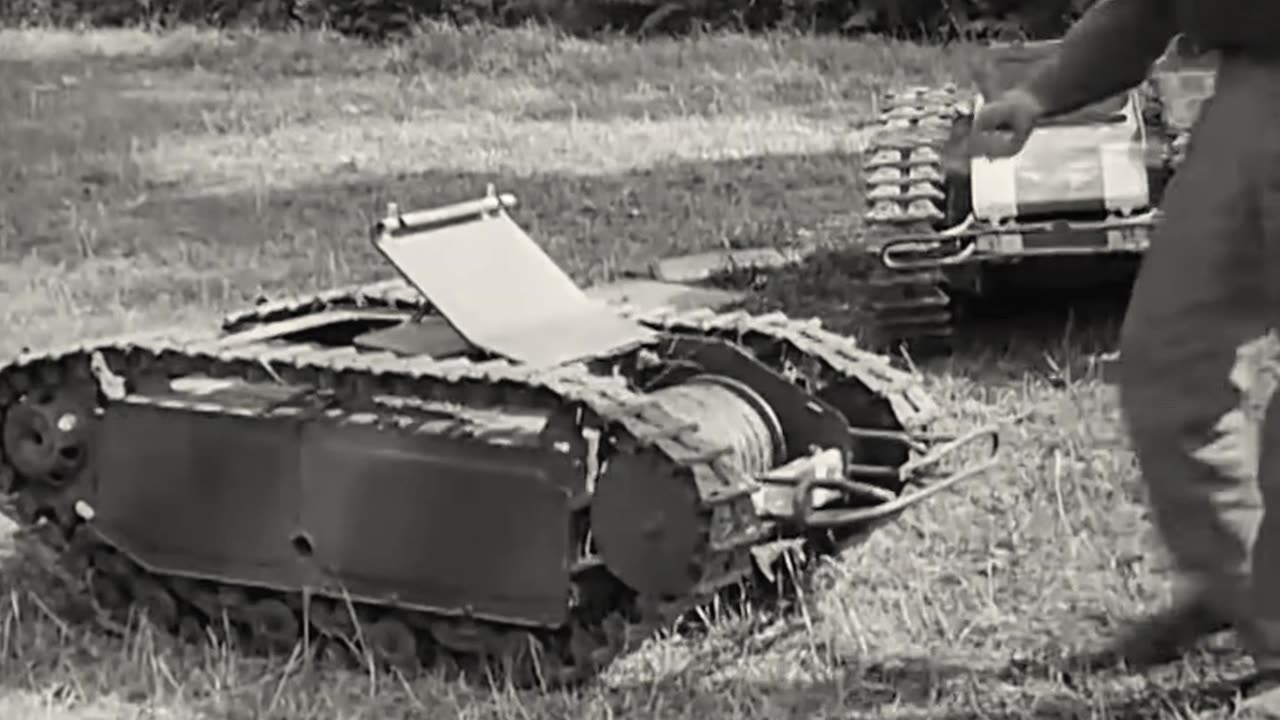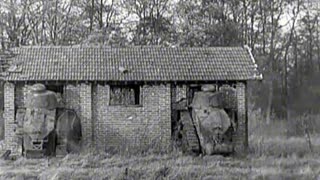Premium Only Content

US soldiers messing around with Goliath tracked mines captured in Italy in 1944
The Goliath tracked mine (Leichter Ladungsträger Goliath) was a series of two unmanned ground vehicles used by the German Army as disposable demolition vehicles during World War II. These were the electrically powered Sd.Kfz. 302 and the petrol-engine powered Sd.Kfz. 303a and 303b. They carried 60 or 100 kg (130 or 220 lb) of high explosives, depending on the model, and were intended to be used for multiple purposes, such as destroying tanks, disrupting dense infantry formations, and the demolition of buildings or bridges. Goliaths were single-use vehicles that were destroyed by the detonation of their warhead.
Goliaths were used on all fronts where the Wehrmacht fought, beginning in early 1942. They were used principally by specialized Panzer and combat engineer units. Goliaths were used at Anzio in Italy in April 1944, and against the Polish resistance during the Warsaw Uprising in 1944. A few Goliaths were also seen on the beaches of Normandy during D-Day, though most were rendered inoperative due to artillery blasts severing their command cables. Allied troops also encountered a small number of Goliaths in the Maritime Alps following the landings in southern France in August 1944.
Although a total of 7,564 Goliaths were produced, the single-use weapon was not considered a success due to high unit cost, low speed (just above 6 km/h), poor ground clearance (just 11.4 cm), the vulnerable control cable, and thin armor which could not protect the vehicle from small-arms fire. The Goliath was also too big and heavy to be easily man-portable. Mostly, they failed to reach their target although the effect was considerable when they did.
Large numbers of Goliaths were captured by the Allies. Although they were examined with interest by Allied intelligence, they were seen as having little military value. Some were used by the United States Army Air Force as aircraft tugs, although they quickly broke down as the disposable vehicles were not designed for sustained use.
-
 2:23
2:23
hw97karbine
1 month agoRenault FT tanks on demolition duty
71 -
 19:12
19:12
Robbi On The Record
7 hours ago $9.25 earnedThe Loneliness Epidemic: AN INVESTIGATION
32.6K65 -
 14:45
14:45
Mrgunsngear
1 day ago $90.47 earnedFletcher Rifle Works Texas Flood 30 Caliber 3D Printed Titanium Suppressor Test & Review
63K16 -
 17:17
17:17
Lady Decade
1 day ago $4.63 earnedMortal Kombat Legacy Kollection is Causing Outrage
35.2K6 -
 35:51
35:51
Athlete & Artist Show
1 day ago $8.10 earnedIs Ryan Smith The Best Owner In The NHL?
45.6K4 -
 22:56
22:56
American Thought Leaders
2 days agoCharles Murray: I Thought Religion Was Irrelevant to Me. I Was Wrong.
44.2K21 -
 36:22
36:22
Brad Owen Poker
8 hours agoGIGANTIC $17,000+ Pot In BOBBY’S ROOM! TRAPPING Top Pro w/FULL HOUSE!! Big Win! Poker Vlog Ep 326
44.2K1 -
 3:53
3:53
NAG Daily
1 day agoRUMBLE RUNDOWN: DREAM HACK SPECIAL W/Greenman Reports
40K7 -
 1:28
1:28
Damon Imani
2 days agoThey Laughed at Trump’s Cognitive Test — Damon Made Them REGRET It!
44.7K29 -
 9:14
9:14
Freedom Frontline
1 day agoAdam Schiff PANICS As Eric Schmitt Exposes His Dirty Lies LIVE
29.6K60